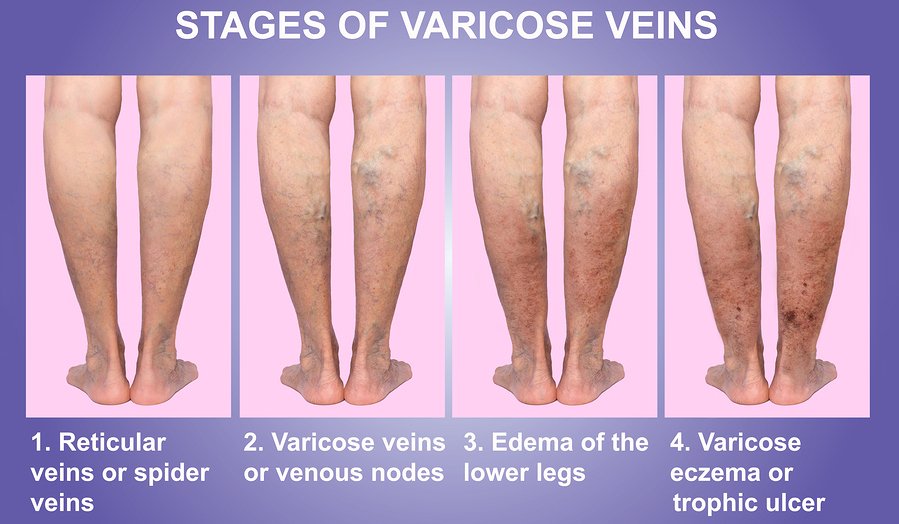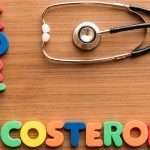One day, you notice a little discoloration on your leg. Upon closer inspection, you see that it is raised and swollen, with a bluish cast. Welcome to your first varicose vein. This condition is very common, particularly in older people, those who are on their feet all day for work, and during pregnancy. And while most people who seek medical attention to deal with their varicose veins do it because they are unhappy with the way that they look, new research suggests that varicose veins might also be related to potentially dangerous blood clots.
The study, which was conducted at Chang Gung Memorial Hospital in Taoyuan, Taiwan, found that varicose veins are associated with a considerably increased risk of developing life-threatening blood clots.1 Chang, Shyue-Luen; et al. “Association of Varicose Veins With Incident Venous Thromboembolism and Peripheral Artery Disease.” Journal of the American Medical Association. 27 February 2018. Accessed 4 March 2018. http://jamanetwork.com/journals/jama/article-abstract/2673551 The researchers compiled data on 425,968 men and women enrolled in Taiwan’s National Health Insurance program between 2001 and 2014, then tracked these subjects through 2014.
Approximately half of the participants had been diagnosed with varicose veins. When the researchers compared that against their medical histories for clots and other vein and artery problems, they discovered a notable link. People with varicose veins were shown to have a 5.3 times greater risk of developing deep vein thrombosis (DVT), which is a clot that forms within a vein that can travel to the lungs with possibly fatal consequences.
Other problems were also more likely to occur in those with varicose veins, but the risk was not as high as DVT. However, there was still an increase in cases of pulmonary embolism (PE), which are clots that lodge in a blood vessel of the lung, and peripheral artery disease (PAD), which is a narrowing of the arteries in areas of the body other than the chest, most frequently in the legs, that reduces blood flow to those areas.
The study was not designed to prove cause and effect, so we do not know whether the varicose veins actually cause the clots to form. However, the relationship appears to be significant enough not to ignore, especially since varicose veins are such a common problem. According to the American Heart Association, an estimated 23 percent of adults in the United States suffer from varicose veins. They are slightly more common in women and in those over the age of 50.
So how can you protect yourself if you have varicose veins? Your first order of business is to do as much as possible to treat the veins. Make sure you’re not standing still for long periods of time. If your work requires a lot of standing, be sure to take periodic breaks that allow for some sitting where you can elevate your legs and better still, brief walks that will help your circulation rebound. And when you do have to stand for some time, wear compression stockings that can also benefit your circulation. If you’re overweight, lose some of those excess pounds. Being overweight is a risk factor for varicose veins as it puts greater strain on your entire vascular system.
Since varicose veins are associated with inflammation, you may see some improvement in the condition from consuming anti-inflammatory foods. Foods rich in B-complex vitamins such as tuna, salmon, eggs, sweet potatoes, avocadoes, bananas, and broccoli can help protect blood vessels throughout the body. And you can further bolster your diet by eating foods known to have anti-inflammatory effects, such as ginger, turmeric, garlic, and blueberries. Also, you might want to consider supplementing with horse chestnut extract, which is widely used in Europe to treat chronic venous insufficiency (CVI) and issues with varicose veins. It has been shown to lower leg pain and improve circulatory function in individuals with this problem.2 Bertram Ottillinger and Karin Greeske. “Rational therapy of chronic venous insufficiency – chances and limits of the therapeutic use of horse-chestnut seeds extract.” BMC Cardiovasc Disord. 2001; 1: 5. Published online 2001 Dec 7. http://www.ncbi.nlm.nih.gov/pmc/articles/PMC61039/ In fact, studies have shown that it is as effective as support stockings in removing fluid from your lower legs.3 C Diehm, H.J Trampisch, S Lange, C Schmidt. “Comparison of leg compression stocking and oral horse-chestnut seed extract therapy in patients with chronic venous insufficiency.” The Lancet. Volume 347, No. 8997, p292–294, 3 February 1996. http://www.thelancet.com/journals/lancet/article/PIIS0140-6736(96)90467-5/abstract
There are ways to help prevent developing deep vein thrombosis, too. A good systemic proteolytic enzyme formula can benefit the circulatory system overall and help reduce clotting. Add to that a regimen of regular exercise, and you will have a much better chance of maintaining healthy veins as you age.
References
| ↑1 | Chang, Shyue-Luen; et al. “Association of Varicose Veins With Incident Venous Thromboembolism and Peripheral Artery Disease.” Journal of the American Medical Association. 27 February 2018. Accessed 4 March 2018. http://jamanetwork.com/journals/jama/article-abstract/2673551 |
|---|---|
| ↑2 | Bertram Ottillinger and Karin Greeske. “Rational therapy of chronic venous insufficiency – chances and limits of the therapeutic use of horse-chestnut seeds extract.” BMC Cardiovasc Disord. 2001; 1: 5. Published online 2001 Dec 7. http://www.ncbi.nlm.nih.gov/pmc/articles/PMC61039/ |
| ↑3 | C Diehm, H.J Trampisch, S Lange, C Schmidt. “Comparison of leg compression stocking and oral horse-chestnut seed extract therapy in patients with chronic venous insufficiency.” The Lancet. Volume 347, No. 8997, p292–294, 3 February 1996. http://www.thelancet.com/journals/lancet/article/PIIS0140-6736(96)90467-5/abstract |












A small number of
A small number of practitioners know that Swertia Chirata has got the property to prevent clotting. I have been using it for a long time. Similarly Naja Tripudians in 30 potency has also got a potency to prevent instantly clotting tendency, therefore it is considered a life-saving drug in homeopathy say when a patient is quickly losing his blood pressure (leave the factor like loss of blood) due to congenital heart disease or otherwise, it raises the blood pressure and normalise the falling pulse just within a few minutes. Administering this medicine I saved a couple of comatose patients on whom other methods had failed to revive.